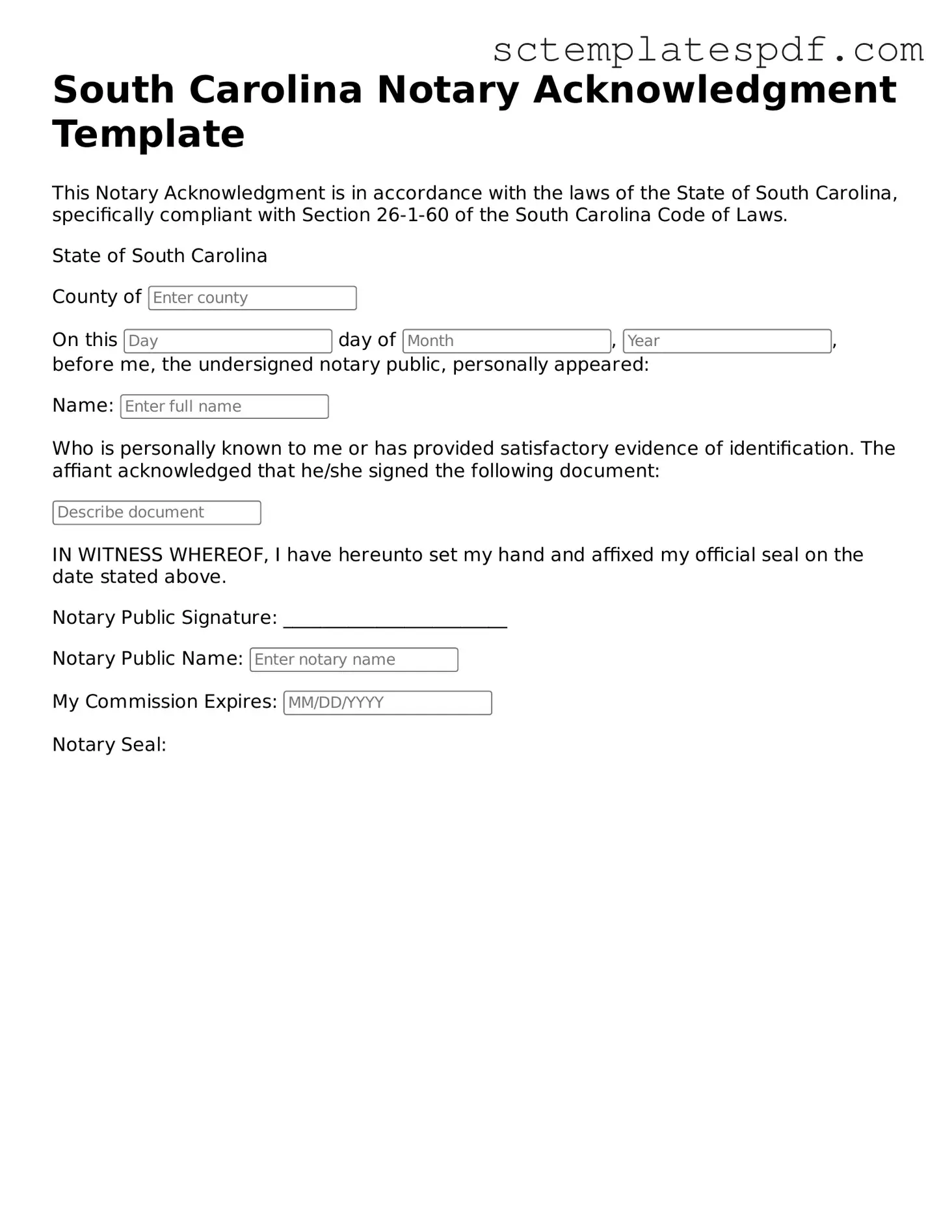Valid South Carolina Notary Acknowledgement Document
The South Carolina Notary Acknowledgement form serves as a vital document that confirms a person's signature on a legal instrument. This form ensures that the signer is who they claim to be and that they signed the document willingly and without coercion. Understanding how to properly complete this form is essential for anyone involved in legal transactions in South Carolina.
Ready to fill out the South Carolina Notary Acknowledgement form? Click the button below to get started!
Fill Out Your Notary Acknowledgement
